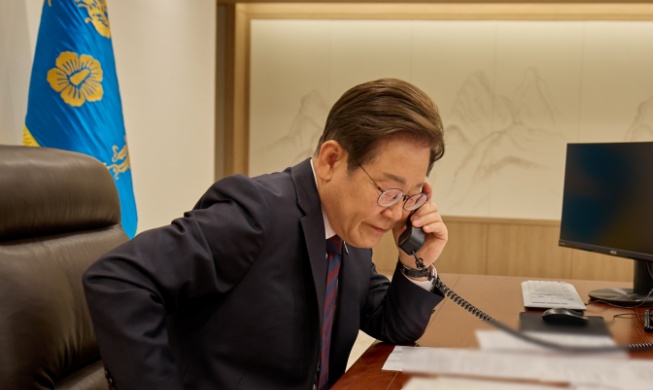View this article in another language
- 한국어
- English
- 日本語
- 中文
- العربية
- Español
- Français
- Deutsch
- Pусский
- Tiếng Việt
- Indonesian
Flora & Fauna of Korea #52
Korea.net publishes a series of articles, “Nature You Meet in the Mountains,” about the peninsula’s mushrooms, insects, trees and herbs & flowers.
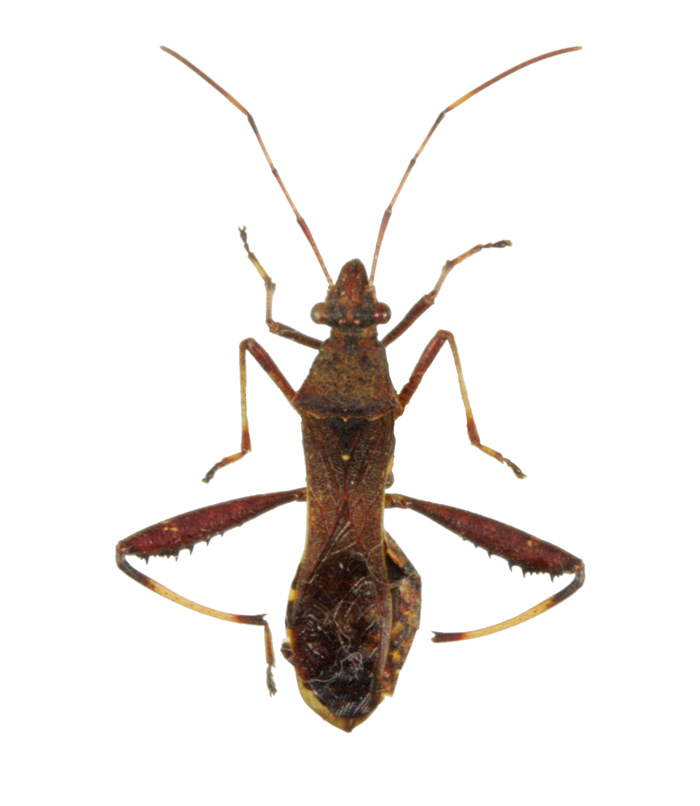
Insects
Name: 톱다리개미허리노린재 Topdarigaemiheorinorinjae
Scientific name: Riptortus clavatus (Thunberg)
Distribution: Korea, China, Japan, Taiwan
This stinkbug is about 13.5 to 27.5 millimeters long. The color of the body is reddish and dark brown. The color of the feelers is light brown. The shape of the anterior thorax is trapezoid and the edge of the back is prominently sharp. The abdominal segments at the basal are thin and the edge of sides is narrow and widely expanded. There is a yellow stripe. The thigh of the back leg is cylindrical. There are sharp scalids along the edge at the back. The adults look like bees when flying. The larvae are shaped like an ant and show a protective mimicry.
This insect lives on weeds in the mountain and fields. Adults appear between May and October. They drink from leguminous plants. Also, they damage grains, like rice or millet.
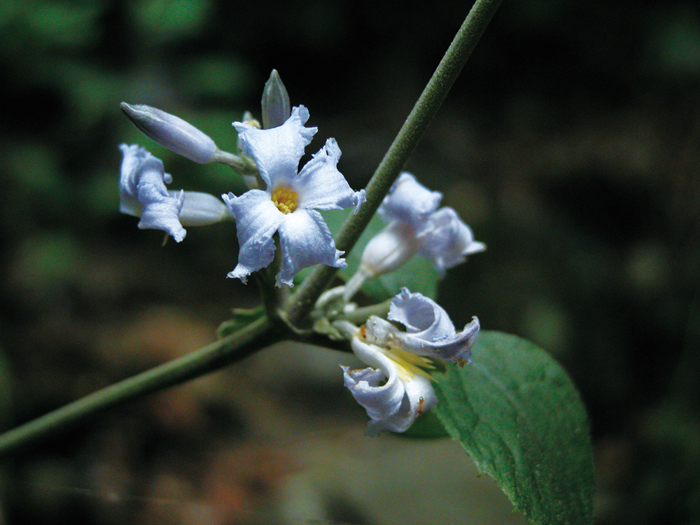

Trees
Name: 자주조희풀 (목단풀) Jajujohuibul
Scientific name: Clematis heracleifolia var. davidiana Hemsl.
Type: Deciduous broadleaf shrub
Blooming season: August to September
Bearing season: September to October
Distribution: mountains in the central and northern parts of the peninsula
This mountainous tree has a thin and long trunk. The leaves are shaped like wide eggs. The edge is saw-toothed. The flowers are dioecious and blue. It bears achene fruit. It is packed with long hairs.
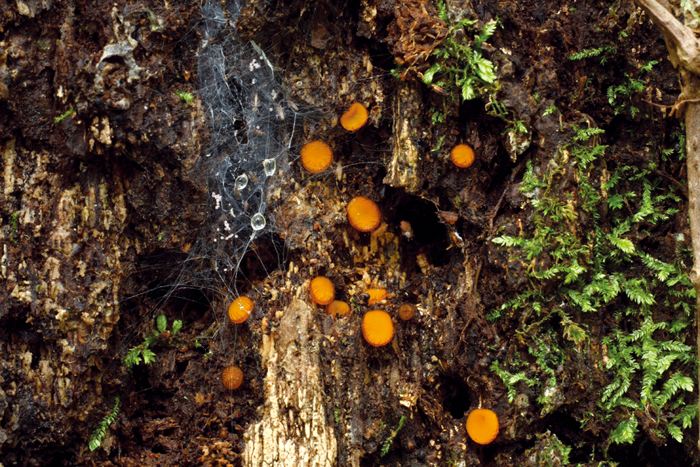
Mushrooms
Name: 접시버섯(주홍접시버섯), Jeopsipeoseot
Scientific name: Scutellinia scutellata (L.) Lambotte
Type: saprophile spore
Print: white
Inedible
This mushroom grows on rotten stems of fallen trees in the forest or on the ground, in groups. The cap is about 0.3 to 1 centimeters wide. The color is light orange and forms a small dish shape. There is dark brown fur about 1 millimeter at the edge.
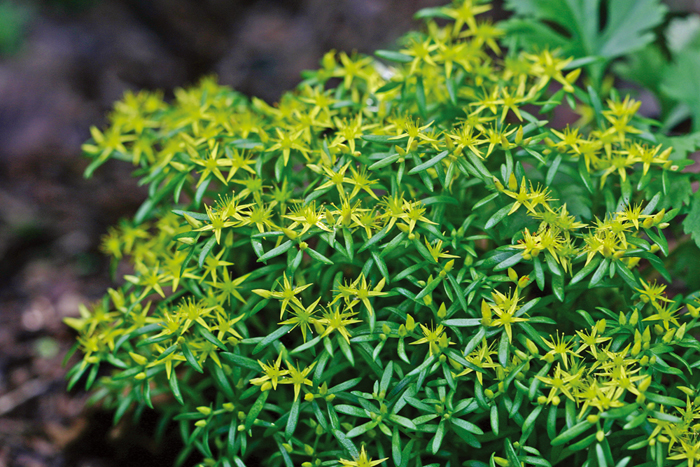
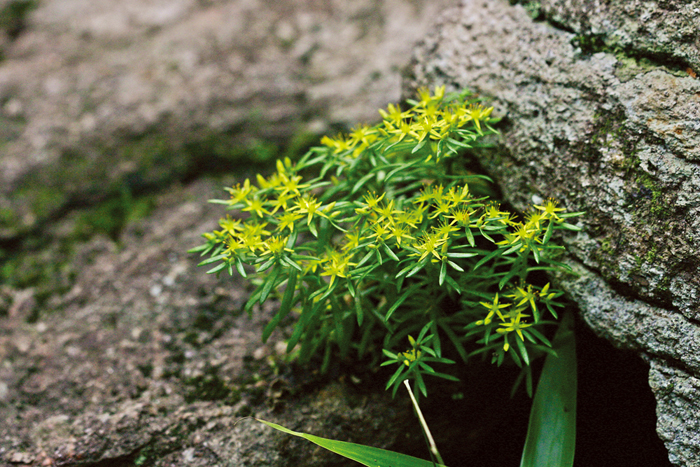
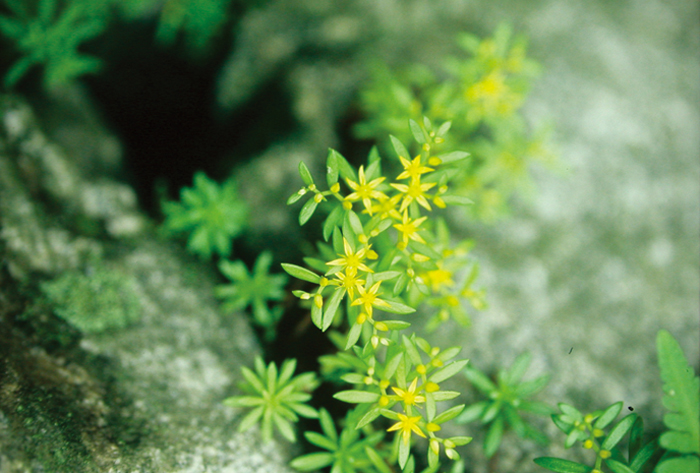
Herbs & Flowers
Name: 바위채송화(개돌나물), Pawchaesonghwa
Scientific name: Sedum polytrichoides Hemsl.
Blooming season: July to September
Bearing season: October
Distribution: mountains in the central and southern parts of the peninsula
This perennial herb grows to about 7 centimeters. The stem is packed and comes out straight or obliquely. The leaf grows in the corner and there is no leaf stalk. The end of the leaf is pointed and is violet at the bottom. The flowers are yellow and there is no flower stalk because of the inflorescence. The fruit looks like a rounded spear and comes in five pieces.
*This series of articles about Korea’s insects, trees, mushrooms and herbs & flowers has been made possible by cooperation with the Korea National Arboretum.
Korea.net publishes a series of articles, “Nature You Meet in the Mountains,” about the peninsula’s mushrooms, insects, trees and herbs & flowers.

Insects
Name: 톱다리개미허리노린재 Topdarigaemiheorinorinjae
Scientific name: Riptortus clavatus (Thunberg)
Distribution: Korea, China, Japan, Taiwan
This stinkbug is about 13.5 to 27.5 millimeters long. The color of the body is reddish and dark brown. The color of the feelers is light brown. The shape of the anterior thorax is trapezoid and the edge of the back is prominently sharp. The abdominal segments at the basal are thin and the edge of sides is narrow and widely expanded. There is a yellow stripe. The thigh of the back leg is cylindrical. There are sharp scalids along the edge at the back. The adults look like bees when flying. The larvae are shaped like an ant and show a protective mimicry.
This insect lives on weeds in the mountain and fields. Adults appear between May and October. They drink from leguminous plants. Also, they damage grains, like rice or millet.


Trees
Name: 자주조희풀 (목단풀) Jajujohuibul
Scientific name: Clematis heracleifolia var. davidiana Hemsl.
Type: Deciduous broadleaf shrub
Blooming season: August to September
Bearing season: September to October
Distribution: mountains in the central and northern parts of the peninsula
This mountainous tree has a thin and long trunk. The leaves are shaped like wide eggs. The edge is saw-toothed. The flowers are dioecious and blue. It bears achene fruit. It is packed with long hairs.

Mushrooms
Name: 접시버섯(주홍접시버섯), Jeopsipeoseot
Scientific name: Scutellinia scutellata (L.) Lambotte
Type: saprophile spore
Print: white
Inedible
This mushroom grows on rotten stems of fallen trees in the forest or on the ground, in groups. The cap is about 0.3 to 1 centimeters wide. The color is light orange and forms a small dish shape. There is dark brown fur about 1 millimeter at the edge.



Herbs & Flowers
Name: 바위채송화(개돌나물), Pawchaesonghwa
Scientific name: Sedum polytrichoides Hemsl.
Blooming season: July to September
Bearing season: October
Distribution: mountains in the central and southern parts of the peninsula
This perennial herb grows to about 7 centimeters. The stem is packed and comes out straight or obliquely. The leaf grows in the corner and there is no leaf stalk. The end of the leaf is pointed and is violet at the bottom. The flowers are yellow and there is no flower stalk because of the inflorescence. The fruit looks like a rounded spear and comes in five pieces.
*This series of articles about Korea’s insects, trees, mushrooms and herbs & flowers has been made possible by cooperation with the Korea National Arboretum.
Most popular
- Military discharge sets stage for reunion of all 7 BTS members
- BTS to mark 12th anniversary of debut with 2-week festival
- Lee Jae-myung officially sworn in as nation's 21st president
- Presidents Lee, Trump discuss tariff deal in first phone talks
- President's 1st executive order is launch of economic task force
